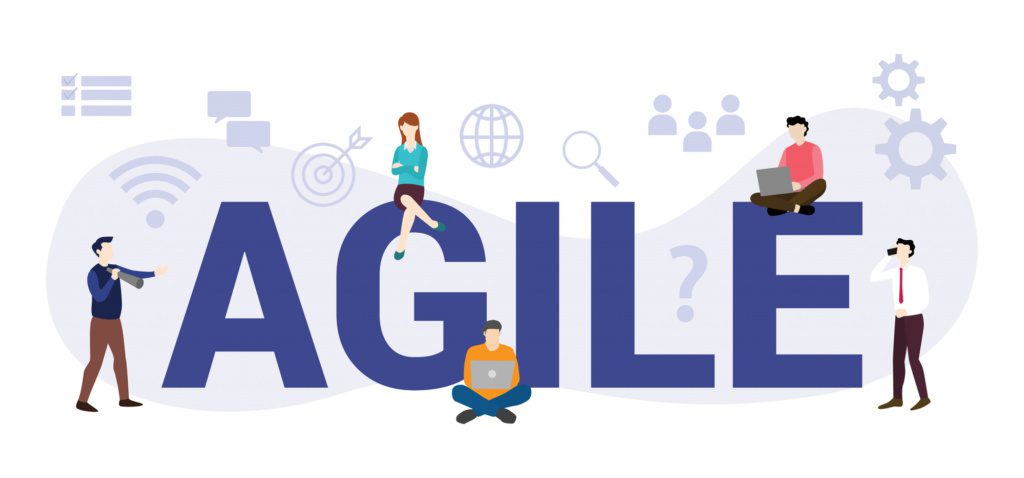Agile: Cara Kerja yang Lebih Fleksibel dan Efektif
Apa itu Agile?
Pernahkah kamu merasa proyek yang sedang kamu kerjakan selalu meleset dari jadwal atau hasilnya tidak sesuai dengan yang diharapkan? Jika iya, mungkin kamu perlu mempertimbangkan untuk menggunakan metode Agile. Agile adalah sebuah pendekatan dalam pengelolaan proyek yang menekankan fleksibilitas, adaptasi, dan kolaborasi.
Bayangkan kamu sedang membangun sebuah rumah. Dengan metode tradisional, kamu akan membuat desain yang sangat detail di awal, lalu baru mulai membangun. Masalahnya, seringkali selama proses pembangunan muncul kendala atau perubahan kebutuhan yang tidak terduga. Akibatnya, proyek bisa molor dan biaya membengkak.
Dengan Agile, pendekatannya berbeda. Kamu akan membuat desain awal yang lebih umum, lalu membangun rumah secara bertahap. Setiap tahap akan diuji dan dievaluasi, sehingga kamu bisa langsung melakukan penyesuaian jika ada perubahan kebutuhan.
Prinsip-Prinsip Agile
Agile didasarkan pada beberapa prinsip utama, yaitu:
- Individu dan interaksi lebih diutamakan daripada proses dan alat: Agile menekankan pentingnya peran individu dalam tim dan komunikasi yang efektif antar anggota tim.
- Perangkat lunak yang bekerja lebih diutamakan daripada dokumentasi yang komprehensif: Agile lebih fokus pada menghasilkan produk yang berfungsi daripada membuat dokumentasi yang tebal.
- Kolaborasi dengan pelanggan lebih diutamakan daripada negosiasi kontrak: Agile mendorong kolaborasi yang erat dengan pelanggan untuk memastikan bahwa produk yang dihasilkan sesuai dengan kebutuhan mereka.
- Menanggapi perubahan lebih diutamakan daripada mengikuti rencana: Agile mengakui bahwa perubahan adalah hal yang wajar dalam sebuah proyek, sehingga tim harus siap untuk beradaptasi dengan perubahan tersebut.
Mengapa Agile Populer?
Agile semakin populer karena menawarkan beberapa keuntungan, antara lain:
- Lebih fleksibel: Agile memungkinkan tim untuk beradaptasi dengan perubahan kebutuhan pelanggan secara cepat.
- Hasil yang lebih baik: Dengan melibatkan pelanggan secara aktif, Agile membantu memastikan bahwa produk yang dihasilkan sesuai dengan kebutuhan mereka.
- Meningkatkan produktivitas: Agile mendorong tim untuk bekerja lebih efisien dan efektif.
- Meningkatkan kepuasan pelanggan: Agile membantu membangun hubungan yang lebih baik dengan pelanggan.
Bagaimana Agile Bekerja?
Agile diimplementasikan melalui berbagai framework, seperti Scrum, Kanban, dan Extreme Programming (XP). Masing-masing framework memiliki cara kerjanya sendiri, namun secara umum, Agile melibatkan beberapa tahapan berikut:
- Perencanaan: Tim akan menentukan tujuan proyek, membagi proyek menjadi beberapa bagian yang lebih kecil (sprint), dan membuat rencana kerja.
- Pengembangan: Tim akan bekerja sama untuk mengembangkan produk secara bertahap, dengan setiap sprint menghasilkan hasil yang dapat digunakan.
- Uji coba: Produk yang dihasilkan akan diuji secara berkala untuk memastikan kualitasnya.
- Evaluasi: Tim akan melakukan evaluasi secara berkala untuk mengidentifikasi area yang perlu perbaikan dan membuat penyesuaian terhadap rencana kerja.
Siapa yang Bisa Menggunakan Agile?
Agile dapat diterapkan pada berbagai jenis proyek, mulai dari pengembangan perangkat lunak hingga pembangunan produk fisik. Agile juga dapat digunakan oleh tim yang terdiri dari berbagai disiplin ilmu, seperti programmer, desainer, dan manajer proyek.
Kesimpulan
Agile adalah sebuah pendekatan yang sangat efektif untuk mengelola proyek-proyek yang kompleks dan dinamis. Dengan menekankan fleksibilitas, kolaborasi, dan adaptasi, Agile dapat membantu tim untuk menghasilkan produk yang berkualitas tinggi dan memenuhi kebutuhan pelanggan.

